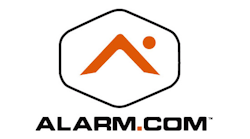Connected homes driving innovation in residential security
What once was considered a luxury only the wealthy could afford, home automation and interactive services have now become a common offering among providers of residential security systems. Not only has it had a tremendous impact on the business model of alarm dealers, it’s also helping to shape the face of the technology itself. Just taking a look at what manufacturers have to offer in terms of alarm panels at this year’s ISC West show, it’s evident that consumer technology trends are starting to bleed over into the space. No longer are generic keypads and key fobs adequate for the home security user as touchscreens and icon-based interfaces have come to dominant the panel landscape.
According to Brian Leland, Americas product management leader for intrusion at Interlogix, interactive services are more affordable now than at any point in the past and offer the industry a potential opportunity to increase the penetration of residential security systems in the U.S. from what has been a stagnant 18 to 20 percent over the last decade.
“Home automation has become much more mainstream in the security channel,” Leland said. “Consumers are looking for something that takes care of their home. For (manufacturers) as we talk about product development, it’s part of our core.”
In addition, it’s also not enough simply to be able to offer this wide range of interactive services – energy management, temperature control, weather alerts and the locking and unlocking of doors – consumers also want to be able to tap into these features remotely via their cell phone. And while the push to interactive services can be attributed at least in part to the entry of new players into the market, Leland said new entrants into the space often find that creating a new technology or service is not sustainable unless they also develop the backend infrastructure necessary to support it.
“You can’t just ship a product and say ‘good luck,’” said Leland, explaining that companies must have technical assistance available to help their dealers and end customers.
Interlogix is highlighting its new Advisor alarm panel, which enables dealers to customize the features they want. While some dealers may want every communications protocol possible, such as cellular, broadband, Wi-Fi, Z-Wave or Bluetooth, Leland said that others may just want two or three these. “We want to make sure they can add what they want,” he said.
One company that has been on the leading edge of this trend towards more interactive services is Alarm.com. According to Jay Kenny, the company’s vice president of marketing, two key product innovations that Alarm.com is beginning to roll out to customers are the concepts of geo-location and energy management.
Geo-location, which involves tying a consumer’s mobile device to their home security panel, allows a system to send an alert to a customer if they travel outside a predetermined boundary to remind them, for example, if they forgot to arm their system. Kenny said that rules can also be set using geo-location that would automatically arm or disarm a system based on the proximity of a customer to the residence.
While much has been made about the advent of energy management and the control of home lighting and other energy consuming devices through security systems, Kenny said that Alarm.com has developed an energy monitoring feature, which provides customers with information about how they are actually consuming energy.
“We have a role to play in the connected home,” Kenny said. “People want to add more and more things and we are investing in the infrastructure to make that safer and easier.”
In addition to geo-location and energy monitoring, Alarm.com also announced several new partnerships at the show, including integration with LiftMaster garage door openers, as well as Lutron light and shade controls.
“Right now, it’s all about apps and the simplicity it takes to make the system work,” Ralph Maniscalco, director of marketing communications, security products Americas, for Honeywell said of the alarm technology market.
Honeywell launched its new LYNX Touch 5100 wireless alarm panel this week at the show along with its Tuxedo Touch touchscreen controller with Total Connect remote services. The LYNX Touch 5100 is scheduled to be released later in Q2 and features Z-Wave integration and Wi-Fi communications. The panel also offers sensor technology for garage door control, as well as severe weather alerts. The Tuxedo Touch, which is expected to be available in late spring, integrates the company’s touchscreen controller with its remote services, enabling users to tie security together with other technology devices in the home, such as Z-Wave-enabled lights, thermostats, locks and shades.
Maniscalco believes that security dealers are in a “very unique position,” indicating that while they believe that security will remain the cornerstone of the business, the push to home automation and interactive services will enable them to lead with other things if they so choose to.
“It makes sense. If you know life safety, adding lifestyle shouldn’t be that hard,” Maniscalco said.
Leon Langlais, senior director of product management for intrusion at Tyco Security Products, believes that the “stickiness” of these interactive services and their ability to increase recurring monthly revenue for dealers, as well as potentially help decrease attrition is why they’ve gained such widespread prominence and adoption within the industry. As such, being a dealer involved strictly in the installation of security systems may be out of the question.
“It’s going to be tough on companies that just do security,” he said. “All of our homes will be connected in the not so distant future.”
DSC, a business unit of Tyco Security Products, released its new PowerSeries Neo hybrid intrusion detection solution at ISC West this week. The system combines the flexibility of a modular, hardwired system with the simplicity of a wide range of wireless devices, thus offering customers a fully customizable solution.
Perhaps a bigger question for the industry moving forward, according to Langlais, is not how companies will adapt to the shift towards automation, but what their plan of attack is with regards to the changing communications infrastructure. Langlais said that there are about five to six million alarm systems in the U.S. running on 2G, which will be going away in 2016. As dealers switch these customers over, Langlais said it will be interesting to see how many people opt for interactive services or simply choose to get rid of their system altogether.





